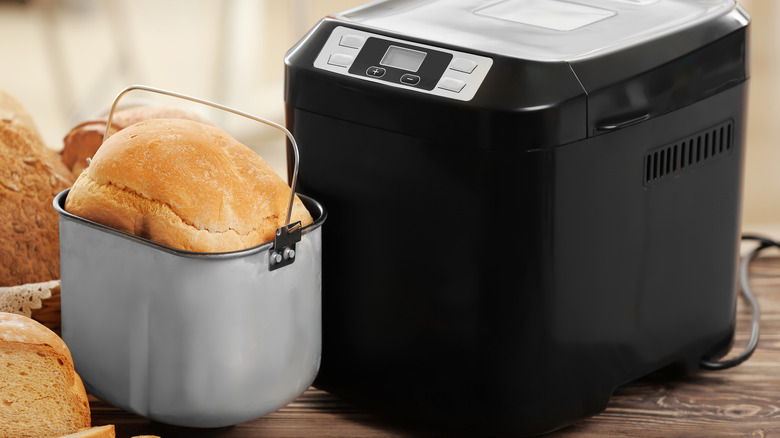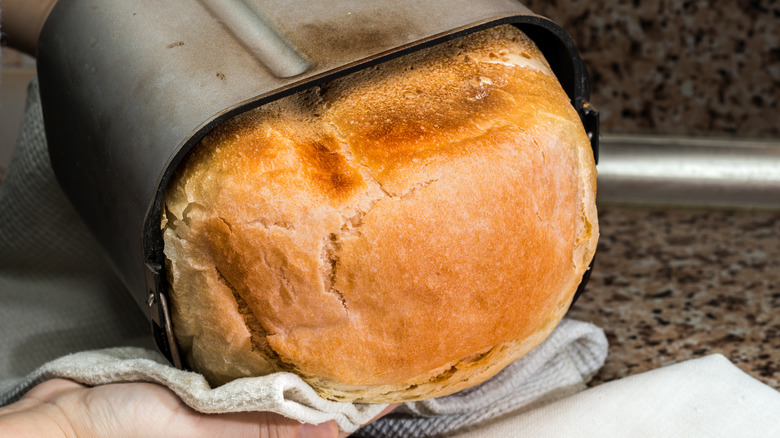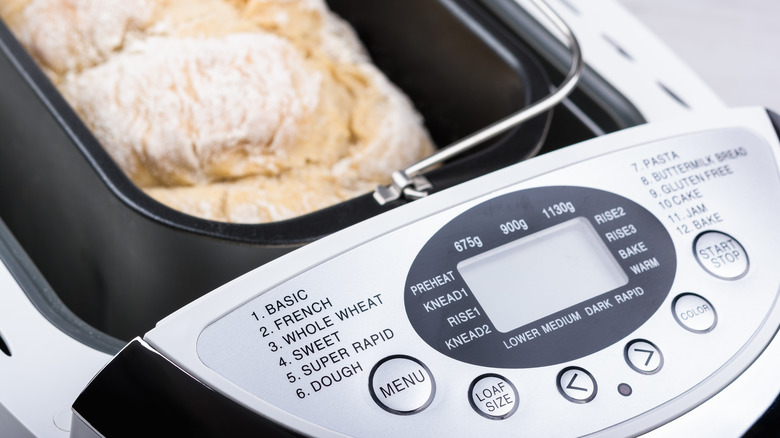What Exactly Is A Bread Maker And How Does It Work?
There's nothing quite like fresh, hot, crusty bread with melted butter oozing down your fingertips as you bite into the steaming slice. The trouble is that while munching on this snack straight out of the oven might be pretty heavenly, it also requires quite a lot of time and effort on your part. Making homemade bread requires first mixing the dough, then having patience while the bread goes through one or more rises, next working up a sweat as you knead it, and finally waiting for the bread to actually cook. It's a very involved and time-consuming process that can make eating homemade bread off-putting.
Now, that's where having a bread maker comes in. A bread maker is a home appliance that takes the work out of making your favorite loaves, handling all the mixing, kneading, rising, and even baking for you. So, if you're a fan of bread but don't want to go through all the hassle of making it from scratch, you can still have delicious homemade loaves with the help of a bread machine.
How bread machines actually make your bread
Typically, to make bread using a bread maker, all you have to do is add the ingredients to the removable bread pan that comes with the machine and let the device do the rest of the work. Now, different machines have different requirements when it comes to adding the ingredients. With some, you can add all the ingredients at once, while others require mixing them together before you toss them in. Still others have a set order in which you need to add the ingredients for the best results. The good news is that all of this is usually outlined in each model's user manual, so you won't be left wondering how to use the device if you purchase one.
Now, as to how the device actually operates once the ingredients are in the machine, the appliance mixes them together using paddles at the bottom of the pan. These paddles will also help knead the dough once the ingredients have come together.
After the mixing and kneading phases, the machine heats the pan in order to get the dough to rise. The machine repeats the kneading and rising process before baking the bread. The whole process typically takes anywhere from two to four hours and leaves you with a steaming hot loaf of bread complete with a soft interior and crispy outer crust.
Bread machine cycles and types of bread you can make
While that's the basic breakdown of how bread machines work, it's also important to note that machines typically come with various pre-set cycles depending on what type of bread you're making, as well as how dark or light you want the crust to be. When you first set your bread maker, you'll need to choose the right one as this will affect things like the kneading, rising, and baking time.
Most bread machines have a basic cycle, which will give you a standard loaf of homemade white bread. They also frequently have a dough setting, which you can use to simply take care of the kneading and rising part of the process so that all you have to do is shape it and bake it in the oven. This is particularly handy if you want to make things like bread rolls or pizza crusts. Because the bread maker only accommodates one shape, the dough setting allows you some versatility. Other settings out there to try include options for making gluten-free bread, cinnamon raisin bread, or whole wheat bread. With bread makers, there are so many different combinations you can try, and none of them require the time-consuming effort that making bread the old-fashioned way does.


